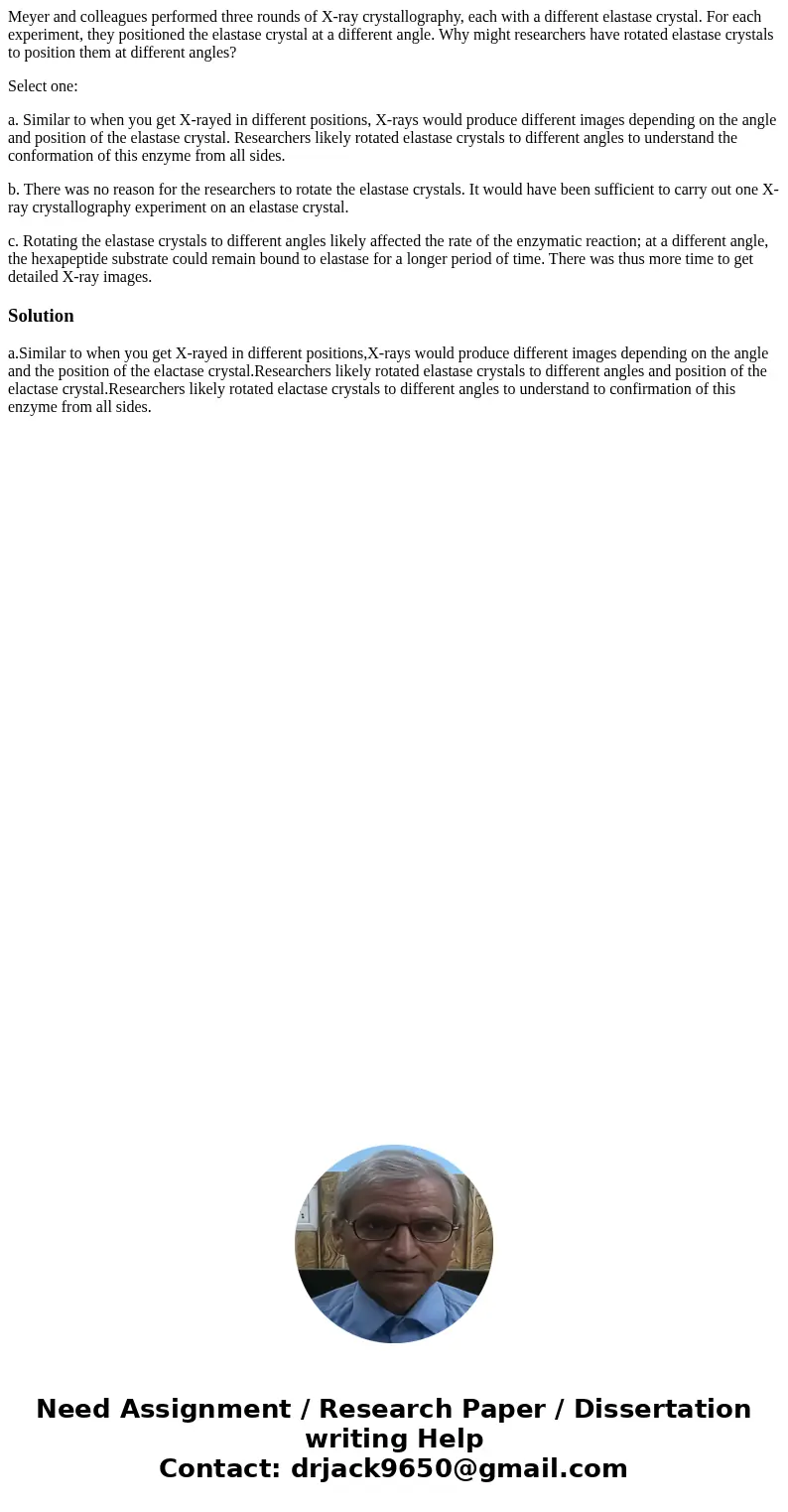Meyer and colleagues performed three rounds of Xray crystall
Meyer and colleagues performed three rounds of X-ray crystallography, each with a different elastase crystal. For each experiment, they positioned the elastase crystal at a different angle. Why might researchers have rotated elastase crystals to position them at different angles?
Select one:
a. Similar to when you get X-rayed in different positions, X-rays would produce different images depending on the angle and position of the elastase crystal. Researchers likely rotated elastase crystals to different angles to understand the conformation of this enzyme from all sides.
b. There was no reason for the researchers to rotate the elastase crystals. It would have been sufficient to carry out one X-ray crystallography experiment on an elastase crystal.
c. Rotating the elastase crystals to different angles likely affected the rate of the enzymatic reaction; at a different angle, the hexapeptide substrate could remain bound to elastase for a longer period of time. There was thus more time to get detailed X-ray images.
Solution
a.Similar to when you get X-rayed in different positions,X-rays would produce different images depending on the angle and the position of the elactase crystal.Researchers likely rotated elastase crystals to different angles and position of the elactase crystal.Researchers likely rotated elactase crystals to different angles to understand to confirmation of this enzyme from all sides.

 Homework Sourse
Homework Sourse